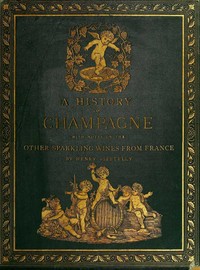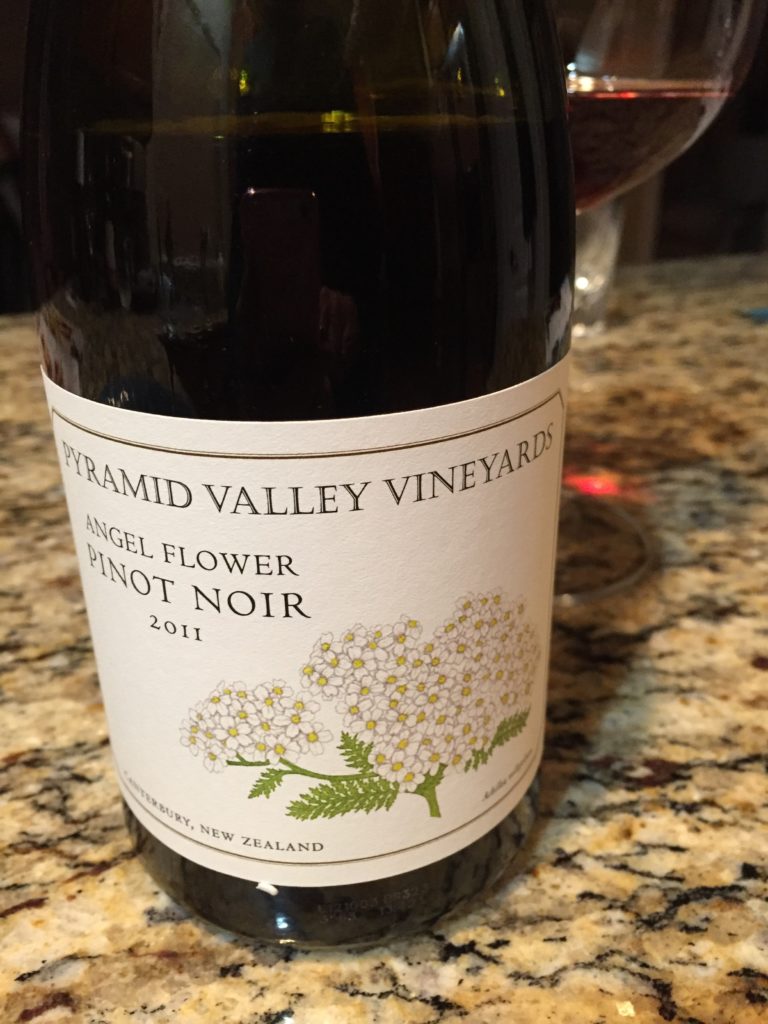 We’re pumped up to sit down to some Champagne chatter with our third quarter #W25Challenge winner! Michelle Miller, CSW, CS, from Reno is in the house, she just happens to work for a Champagne house, and she shares her life-changing wine moment. In this episode we dig into some historical and other fun nuggets of Champagne trivia, stories, and announce a giveaway. We hope you find something delicious for your glass, push play, and have a great day!
We’re pumped up to sit down to some Champagne chatter with our third quarter #W25Challenge winner! Michelle Miller, CSW, CS, from Reno is in the house, she just happens to work for a Champagne house, and she shares her life-changing wine moment. In this episode we dig into some historical and other fun nuggets of Champagne trivia, stories, and announce a giveaway. We hope you find something delicious for your glass, push play, and have a great day!
A LITTLE BIT ABOUT OUR GUEST HOST:
A Certified Specialist of Wine (CSW) and a Certified Sommelier through the Court of Master Sommeliers. I enjoy any and every opportunity to taste, drink, talk and learn about wine. I am an East Coast transplant to Reno NV who loves traveling around wine regions discovering and learning about all the beautiful things the grape has to offer.
Michelle was the winner of our third quarter #W25Challenge and besides getting to co-host the show with us she also helps chose the topic of discussion. Because she adores champagne (and happens to work for a Champagne house), one can imagine our topic du jour would be … Champagne! An interesting point, however, is that this episode was recorded on a Wednesday evening after Michelle got off work from her day job, aaaaannnd none of us happened to have Champagne in our glasses. Go figure.
IN OUR GLASSES:
Michelle: Glendronach “Revival” Series Highland Single Malt Scotch
Val: 2011 Pyramid Valley Vineyards, Angel Flower Pinot Noir, Canterbury, New Zealand. Unfined, unfiltered, indigenous yeasts, and absolutely aromatic, floral, and not funky.
Steph: 2013 Fonte alla Selva Chianti Classico Gran Selezione from Banfi. This is one of the bottles she carried back from Italy because she and her hubby loved its richness and character, PLUS it isn’t available yet in the US. So that makes it even cooler. They opened it the night prior to celebrate Aunt Teri’s birthday and show the family a slideshow of their Italy trip.
DISCUSSION TOPIC DU JOUR: Champagne
While we did chatter away about some of these points, this text below is just offered as bonus content for anyone to geek out on. If we had read all this the show would have gone on for hours, the ladies would have drained their respective bottles, and you all would have turned the show off midway through. Not to mention in just the 36 hours since this episode was released you all have downloaded the crap out of it, so there’s that. We hope you enjoy these notes from Val’s personal study vault.
WHERE/Region:
Champagne. First, it’s a region. It is the northernmost of the French wine growing regions, 90 miles east and south east of Paris and one of the most northerly in the world – and coldest. It is between the 49 and 49.5 degree north parallel – remember, vines grow (generally) between the 30th and 50th parallel (in both the northern & southern hemispheres). This would make Champagne at the very limit of ideal vine growing conditions. Of course, global warming is changing that.
WHEN/History and Lore:
Guys, Champagne has some of the most incredible history that really makes for good reading! You’ve heard Val talk about Don and Petie Kladstrup’s book, Champagne: How the World’s Most Glamorous Wine Triumphed Over War and Hard Times but just to give you a taste:
1st – 5th Centuries: Champagne was ruled by the Romans and was known as Duocortorum. During this time the Celtic tribe of Remi was benefitting from Roman protection from what would otherwise be a constant sacking by barbarian tribes such as the Goths, Teutons, Vandals, Franks, and Huns.
Romans were also responsible for carving out the nearly 250 chalk quarries or “crayeres” extending underground in Champagne. These tunnels can extend 100 feet into the ground, and the crayeres have served many purposes since, beside providing a perfect cellar temperature for storing & aging Champagne.
With the decline of the Roman Empire, rough times were ahead for the region. Its geography rendered it open to attack quite frequently. Reims was invaded & burned, and the crayeres carved out by the Romans provided protection for the Champenoise; meanwhile while cities like Epernay & Chalons were burned at least 25 times.
5th Century: King Clovis united all of Gaul (France) and it was during the late 5th Century that the Franks (where France got its name) moved in on the region. Their leader, King Clovis, stepped up to unite all the tribes of France and became the country’s first king.
With the baptism of King Clovis began the long tradition of crowning of kings in the city of Reims. Why is baptism important here? Well in 496 AD, on Christmas Day, Clovis converted to Christianity as a deal made with the spiritual community of Reims that if he could have the power to defeat his enemies as a result of becoming a Christian he would be baptized. Bishop Remi took a cask of local wine, blessed it, and told Clovis that he would be victorious over his enemies as long as the barrel contained wine. Remember, even though we are talking about Champagne, the wine back then was neither sparkling nor white and clear. In fact, even today there is other wine produced in Champagne besides sparkling, as we talked about in this episode.
9th Century: Champagne wines now have names:
Vins de la montagne (Red-ish wines made with the Gouais Noir). These were also called l’oeil de perdrix, which means “eye of the partridge” the same color, almost pink. We mentioned this in last week’s episode with the Italian occhio de pernice. So if you’ve learned anything from Wine Two Five it’s how to say “partridge’s eye” in two other languages. You’re welcome.
Vins de la riviere (white-ish wines made with Fromenteau) – today’s PG (more onion skin in color, or vin gris)
And guess what, still not bubbly!
12th Century: Champagne’s trade fairs & geography made it popular for textiles & spice exchange. As for the trade fairs during the middle ages, wine, of course, was drunk during buying and selling of leather, wool, spices, etc. These were held 2 times a year and could last more that 6 weeks! And that, boys and girls, is how shopping should be done. With wine in one hand.
13th Century: King Louis the VIII is the first king crowned in Reims cathedral and every king, like 27 of them total, for the next 600 years would be crowned in Reims.
14th – 15th Centuries: the 100 years war ravages Champagne as it becomes battle central between England and France. This not only took its toll on the vines, but the people who were ill with the plague and starved.
16th Century: Pinot Noir started showing up in the vineyards and near Ay, the people loved it. (It was still a vin gris). It was during this time that Dom Perignon was born and sparkling wine, meanwhile, was still a mystery. To some it was still a nuisance (or divine intervention), but the people of Ay realized their sparkling wine, now called Tocane, was becoming popular.
At some point Val references this book from the Gutenberg project: The Facts about Champagne and other sparkling wines by Henry Vizetelly. There is also The History of Champagne by the same author. This is a free resource and is fun reading if you love Champagne history and cannot score an original text for yourself. There are some copies that have been reproduced but (admittedly) have left out some of the content. These books at the Gutenberg Project have been scanned in in their original context. Val likes this. Val’s a book-geek-cork-dork.
Now we have mentioned this before on the show, but in the 17th Century James I decreed that non-essential wood uses, such as glass-blowing, should be fueled with coal. This saved the wood resources for building navy ships. Hotter coal fires equals a stronger glass bottle. This made British bottles more suitable for champagne, since the less stable French bottles often exploded. It was then Sir Robert Mansell who was not only an Admiral in the Royal navy (and a member of Parliament), but an owner of several glass factories where he had a monopoly in 1615.
Until this time, the exploding bottles were reason to wear iron face masks. Fermentation was still stopping for a “winter pause” before starting again in the spring, causing the pressure in the bottles to build up, hence, exploding bottles.
However, in the 1690s, sparkling wine was now intentionally being made (and before that, by the British!)
18th Century: Red wine was still popular, yet Champagne as an industry was finding its momentum.
This is when it also became legal to ship in bottles due to sturdier glass, more uniform bottles (1728).
Glassblower lung capacity often determined bottle size, therefore there was no uniformity in shape or size. In 1735, royal decree mandated that champagne bottles must weigh at least 25 oz and hold a pint. Cork was also mandated, although at the time bottles were secured with string, dipped in wax or linseed oil. The muselet was developed in 1760; this is that wire cage that holds the cork onto the bottle.
It was also during this time the first Champagne houses were stood up. Ruinart was the first in 1729!
Factoid
Well, if that wasn’t a factoid palooza on Champagne, we don’t know what is. However, here’s something a little more digestible:
There are three main grapes used to make Champagne:
- Pinot Noir (38%)
- Pinot Meunier (32%)
- Chardonnay (30%)
Other authorized grapes (which account for less than less than .3% of vine plantings):
- Arbane
- Petit Meslier
- Pinot Blanc
- Pinot Gris
Also, the term “Methode Champenoise” is only reserved for wines made this way IN Champagne. Other French wines, made in the traditional method use the terms “Methode Traditionelle” or Methode Classique,” are called “Cremant.”
Wino Radar
If you enjoyed this episode and want to learn more about sparkling wine, check out 2 of our previous episodes…
Episode 11: Blowing Bubbles and Bustin’ Rhymes
Shoutouts
Thank you to Sue Guerra for leaving a comment on our podcast’s host site, Libsyn, for episode 81. This was the episode with Matthew & Charene from Exotic Wine Travel.
Absolutely loved this podcast about two intrepid wine travelers covering these “underdog” regions. It just goes to show you that you never really do graduate from wine school! Very professionally done and at the same time so relaxed and approachable. Stephanie is also so spot on with her statement that Aperol Spritz are best paired with sunny patios and people watching!
*A note to listeners who are kind enough to go to our Libsyn site to leave comments: We do see them, as we get an email notifying us of the comment. However, Libsyn is currently working to rectify an issue that makes them disappear before we can approve them to appear on the site. We are not deleting your comments, we assure you. But all comments since August have not been showing up on our site and we hope to have it fixed soon.
Patreon Love:
Speaking of Exotic Wine Travel: A copy of Uncorking the Caucasus: Wines from Turkey, Armenia, and Georgia, written by our recent guests Charine Tan and Dr Matthew Horkey from Exotic Wine Travel, will be given away the first week in January!
Here’s how to enter: Your name will be entered into the drawing for the book if you are already a Patreon supporter and if you become a Patreon supporter – at ANY level in November or December. The contest ends January 1st, 2017. You’ll get an entry for each dollar amount for the month of November & December! If you pledge $1/month this month you’ll get one entry. $5/month you’ll get 5 entries. Then we re-enter you for December & the winner will be drawn the first episode in January! For more information, check out our Patreon Page.
Thank you so much to our Patreon supporters! Sending out some Patreon Love to:
“TENacious Tasters”:
Jeff E from the hilarious drinking show, We Like Drinking
 Oh, and did we mention we will be guests on their show for Episode 99? Like, both Steph and Val at the same time? It’s going to be a riot and we will certainly link it up for you when it airs!
Oh, and did we mention we will be guests on their show for Episode 99? Like, both Steph and Val at the same time? It’s going to be a riot and we will certainly link it up for you when it airs!
“It’s not five o’clock and we don’t care” listeners: Thank you:
- Meg from South Dakota
- Clay from Arizona
- Jon in California
- Andrew in Illinois
To learn more and become a Winetastic Listener Supporter for only $1 per month, check out our patron only content at https://www.patreon.com/winetwofivepodcast!
Share the Love
Please share Wine Two Five with your friends and online community, and we certainly appreciate all your involvement and feedback. Leave us a burning wine question or comment on speakpipe. iTunes love is always appreciated in the form of a glowing iTunes review as well. For your listening pleasure, whether IOS or Android, we are also on iHeartRadio! So share our fun W25 community with all the wine lovers in your life!
Come play with us on our FB page, Twitter, Pinterest & YouTube, Google+ spaces if you’d like. Also, if you want to build your collection of wine books (like this one, also available on kindle!) or accessories please check out the online store also located on our website!
Connect with Val on Twitter @WineGalUnboxed and on the Vino With Val FB page, and on Instagram as Vino with Val.
You can find Steph on Twitter @Albarellosoap and on the AlbarelloSoap FB page, and check out the videos on the Albarello YouTube channel! Steph is also on Instagram as the Wine Heroine.
Michelle is on Twitter as @Reno_Wine and Instagram.
One more thing … don’t forget to use the #W25Challenge when you are trying new wines and drinks to win an opportunity to co-host the show with us. Until next week …. Cheers!
Check out the entire episode:
